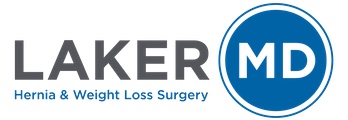Achalasia
Achalasia is an uncommon disorder of the esophagus where the esophagus loses its ability to effectively push food/liquids into the stomach. Over time the pressure generated by the esophagus is greatly reduced and potentially non-existent. In addition, the lower esophageal sphincter (lower esophageal valve) fails to relax preventing food/liquid from passing into the stomach. Achalasia is a progressive disease, over time the symptoms tend to worsen and often the diagnosis is not made until late in the course of the disease. The cause of achalasia remains elusive. There are a number of infectious organisms that have been shown to cause achalasia but this is a relatively rare cause of achalasia in the United States. Autoimmune disorders, such as schleroderma, can lead to the development of achalasia. The common pathologic finding is destruction of ganglion cells of the myenteric plexus (nerves) between the muscular layers of the esophagus and replacement by scar tissue. Most commonly an identifiable cause cannot be determined and this is referred to as primary or idiopathic achalasia.
Chronic Reflux
GERD or gastroesophageal reflux is one of the most common chronic conditions treated by medical physicians. Over 65% of individuals will experience symptoms of reflux on an annual basis. Ten to 15% of people will have recurrent episodes throughout a week’s time.
Hernia
A hernia refers to tissue or an organ from one body cavity moving into another space where it should not normally be. In the majority of cases hernias are related to defects of the abdominal wall or diaphragm. The given medical “name” is based off of the location and nature of the hernia. A hernia is not something that is removed. Hernias are repaired. A punctured bicycle tire can be repaired in a number of ways. The tire puncture could be glued primarily, a patch placed over the opening or perhaps below the opening. Regardless of technique, the problem area remains, it is not removed.
Gallbladder
The gallbladder is a pear shaped hollow organ that is located under the right lobe of the liver. The gallbladder is connected to the liver by a network of tubes that are referred to as ducts. The primary function of the gallbladder is to store and concentrate bile. Bile is made in the liver and is secreted into the duct system. The bile travels from the liver and enters the small intestine within inches from the stomach. Bile enables the fats and oils we eat to be digested and made soluble in a water environment. This allows fats and oils as well as certain fat soluble vitamins to enter into the body and be used as a source fuel or to meet other metabolic needs. When there is a surplus of bile production by the liver the gallbladder becomes a storage depot. The “extra” bile can be stored and concentrated in the gallbladder. When a meal requires a larger volume of bile the gallbladder is triggered to contract and provide an additional amount of bile to aid in digestion.
